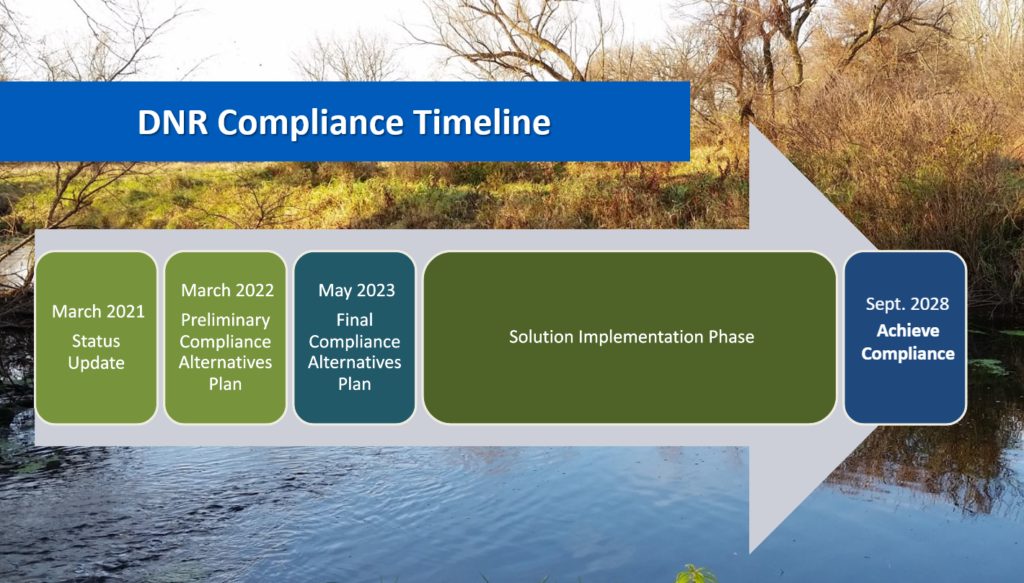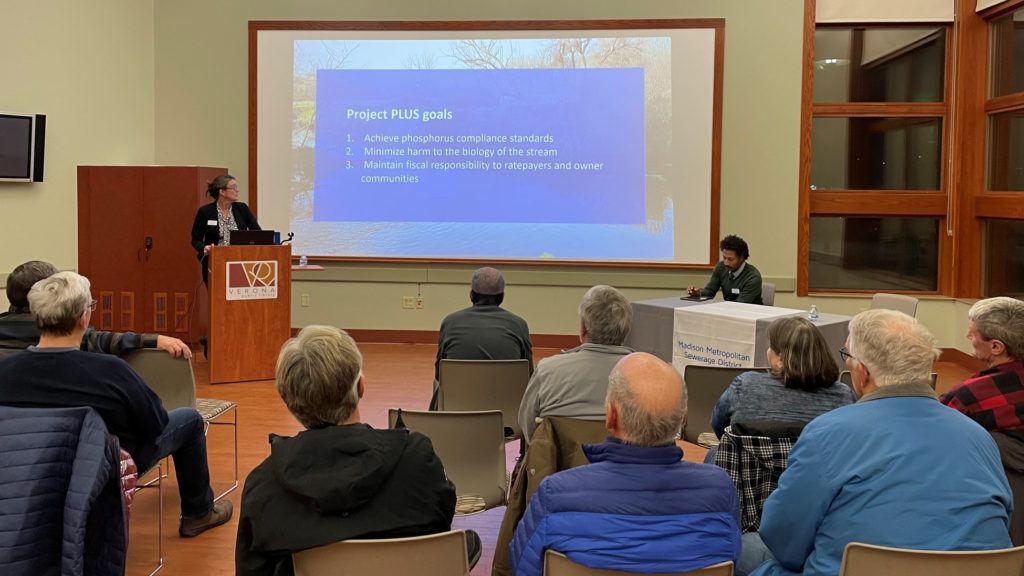The Wisconsin Department of Natural Resources (WDNR) requires all wastewater treatment plants to reduce the amount of phosphorus in their discharges to maintain the health of local waterways and aquatic species, per the federal Clean Water Act and Wisconsin’s Phosphorus Rule.
These regulations serve a purpose at home and downstream. Wastewater treatment plants discharge and drain into Wisconsin rivers and streams that flow into the Mississippi River before moving to the Gulf of Mexico. When in excess, nutrients like phosphorus accumulate and become harmful pollutants for people, aquatic life, and watershed environments.
The good thing is that Madison Metropolitan Sewerage District is already heavily engaged in phosphorus reduction activities, including:
- Removal of over 96% of phosphorus received
- Investment in improved application techniques for biosolids
- Addition of phosphorus harvesting technology
- Implementation of Yahara WINS adaptive management project
- Community awareness and phosphorus education
- Initiation of Project PLUS at Badger Mill Creek

What is Badger Mill Creek PLUS?
To comply with a Wisconsin Pollutant Discharge Elimination System (WPDES) permit, the District must now achieve mandatory phosphorus compliance in Badger Mill Creek, a District discharge stream. Badger Mill Creek PLUS (Phosphorus Limits & Updated Solutions) is the initiative supporting compliance. Considerations for phosphorus compliance in Badger Mill Creek continue to be evaluated. A Final Compliance Alternatives Plan will be submitted to WDNR in May 2023.
Experts across District teams, WDNR and U.S. Geological Survey scientists, engineering firms, and conversations with community partners will help determine the best solution for achieving phosphorus compliance in Badger Mill Creek.
Searching For an Alternative that Aligns with Expert Feedback and Shared Community Interests
Engagement and conversations in the greater Verona community and organizations interested in PLUS have been ongoing for several months. As a result, the District has updated its Commission and owner communities and held two listening sessions open to the public. The first session was on Nov. 30 at the Verona Public Library and the second, held in an accommodating virtual setting, on Dec. 8. The Verona Press published these events in the paper and online on Nov. 18. The listening sessions allowed nearly 50 total attendees to learn about PLUS through a brief presentation and share comments, questions and concerns in small break-out groups with District staff. In addition, collateral materials and a PLUS webpage were created for sharing project information.
To learn more about compliance considerations and PLUS, we encourage interested individuals and groups to watch the most recent listening session here.
Community Engagement Efforts Will Continue
The District is committed to keeping a dialogue flowing about PLUS. Our ongoing stakeholder meetings, public listening sessions and owner community updates have helped us commit to several project outcomes:
- Continue to do the work alongside experts to understand, assess and refine options
- Respect and follow the DNR compliance timeline
- Communicate across our project team, the general public, conservation groups and community groups in a concerted effort
- Listen to concerns, provide information as available and work with the community members and public entities through the process
- Determine solution viability from engineering and biological considerations using a triple-bottom-line assessment (environment, social and economic)
Most important, the final compliance solution will aim to meet PLUS goals that achieve phosphorus compliance standards, minimize harm to the biology of the stream, and maintain fiscal responsibility to our ratepayers and owner communities.
To stay informed on the project or to join our email list, visit www.madsewer.org/bmc-plus and follow the District on social media @madmetrosewer.







